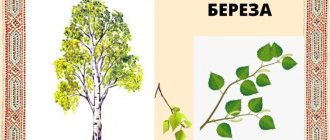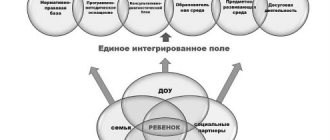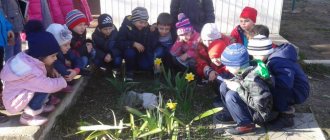Preschool children show special interest in the surrounding nature, its elements and phenomena. Home lessons on the topic “Seasons” should teach the child to distinguish the characteristic signs of spring, summer, autumn, and winter. It would be good if classes were based on joint observations and visual reinforcement of the material.
How does nature change in spring?
March
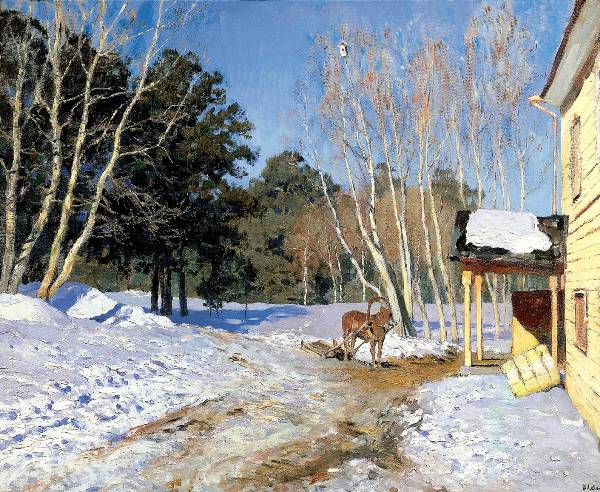
Despite the fact that winter continues to struggle to prolong its reign in March, the first warm rays of the sun begin to gradually warm up the earth and air. The snowy shackles begin to melt under their persistent light, and the harbingers of spring—snowdrops—appear in the first thawed patches. Of course, winter will not immediately give up its position and remind you of itself with chilly cold and sparkling snow, but spring warmth will make itself known with a daytime temperature rise to 0 degrees.
In March, the fluffy winter snow begins to become covered with a dirty crust, and the snowfall obediently gives way to rain. The weather freezes in anticipation of warmth and spring awakening and reminds of their imminent approach with the first cumulus clouds.
The chirping of sparrows becomes more and more joyful and sonorous. Migratory birds will soon arrive, picking up this mischievous song of spring and using it to talk about the awakening of nature.
There are many interesting folk signs associated with March. Among them, the following stand out:
• If fogs occur frequently in March, then summer will be rainy.
• Flooding warns of the appearance of harmful insects in the summer.
• If it is very warm in mid-March, then the summer will be warm.
• March thunder speaks of a good harvest for bread.
• If frosts are rare in March, then the year will be fruitful.
• Long icicles hanging from the roofs of houses indicate a long spring.
• If lightning often flashes in March, but there is no thunder, then the year will be dry.
• If after the March snowstorms the snow falls in waves on the fields, it means there will be a good harvest of garden vegetables and spring grains.
April
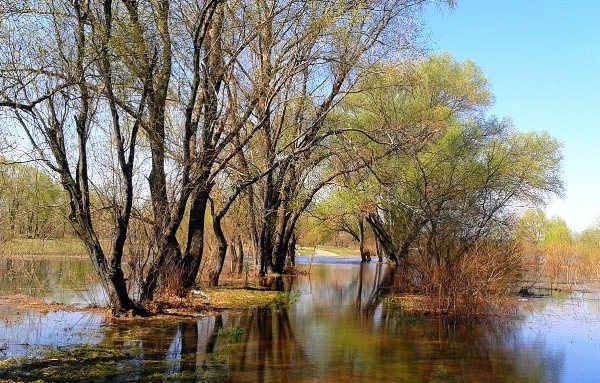
April, as a spring month, like a good wizard, continues to free nature from the shackles of ice and snow. The sonorous singing of birds welcoming spring is combined with the cheerful murmur of streams meandering down the slopes of the roads. The sun is getting higher and higher above the horizon and warming the frozen ground more confidently. The air temperature gradually becomes above 0 degrees. The snow cap is melting faster and faster, and the damp and dark earth opens up to the sun's rays, preparing for a new life.
However, the flood is noticeable not only on roads and forest paths, rivers and lakes are also freed from ice captivity and break this winter world into many thin pieces of ice. The ice on the ponds becomes very thin, and in some places thawed patches even appear. Only small patches of snow in the forest, hidden in places hidden from the spring sun, remind us of the reign of winter. The bark of trees is also freed from ice captivity. Alder begins to bloom - a harbinger of spring.
In the morning hours, a slight frost still tickles your nose and cheek, but during the day you can happily expose your face to the warm rays of the sun and listen to the song of a spring drop.
Many folk signs are also associated with changes in nature in April. Among them are the following:
• If it is significantly cooler at night than during the day, then the weather will be warm and calm.
• A lot of birch sap indicates a rainy summer.
• If at the beginning of April there is still snow and its surface is rough, it means there will be a good harvest.
• Wet April predicts a mushroom summer.
• Starry nights at the end of April also indicate a good harvest. Warm rains also indicate this.
• If there are thunderstorms in early April, there will be a large harvest of nuts.
• If there are no swallows yet at the beginning of April, it means that spring will be cold.
May
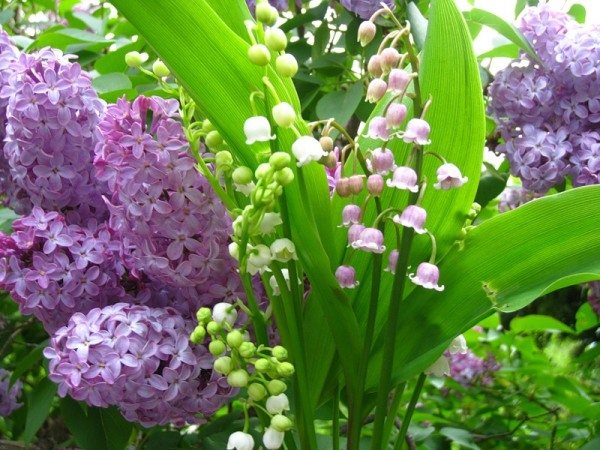
In May, nature, like a sleeping beauty awakened by the first warm rays of spring, begins to rapidly wake up and enjoy life. The buds on the trees confidently open towards the sun and turn into emerald leaves, the first lush grass timidly makes its way through the warmed ground, and the birds greet the long-awaited warmth with ringing trills.
Nature is renewing itself, and although light snow is still possible in some regions of Russia at the beginning of May, when it falls onto the ground warmed by the bright spring sun, it immediately begins to melt. The thermometer is already starting to rise above 10 degrees. And even though this warmth is still unstable, it is already beginning to beckon with anticipation of summer. In this short month, the world around is transformed and begins to play with a riot of colors, you can hear the friendly rustling of young foliage and the buzzing of bees preparing to pollinate the first flowers. The air is filled with the sweet aroma of bird cherry and lilac, and the fruit trees become almost snow-white thanks to the blossoming flowers.
People have long observed the changes in nature in May and made interesting notes. Folk signs associated with May include the following:
• If May turned out to be cold, and rains and fogs were its frequent guests, then the year will be fruitful.
• Rainy May warns of dry June.
• If it often hails in May, then summer will be like that too.
• Many cockchafers and cranes predict drought.
• If the leaves of the oak tree have unfurled, it means we should wait for the weather to get colder.
• The blossoming birch precedes the flowering of lilac and bird cherry, which will begin in a week.
• If the birch tree has opened its leaves in front of the alder tree, it means that the summer will be dry and vice versa.
Top 16 primroses among shrubs and trees
Ten days after the start of sap flow, swelling of the buds becomes noticeable, in which rudimentary shoots are located under the protective bud scales.
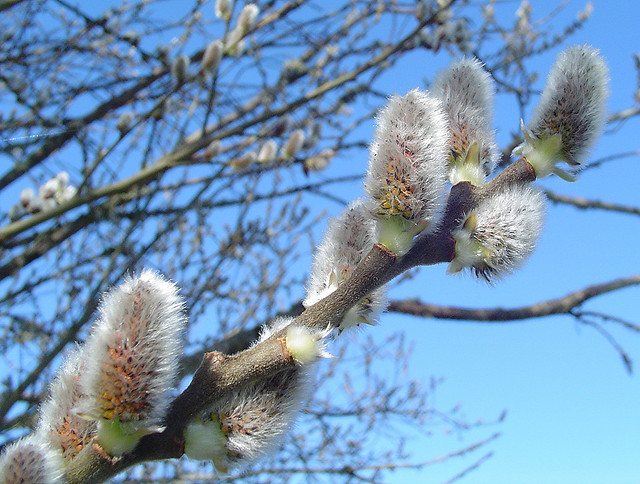
Photo: Tom Brandt
Wind-pollinated trees and shrubs bloom before they are covered with leaves, or at the very beginning of their development.
Alder and hazel are the first to bloom in the second half of April, and among those pollinated by insects, willow. The buds of the willow are tightly covered with brown scales that look like caps.
Having shed them, the buds look like fluffy balls consisting of hairs that protect the flowers from sudden fluctuations in temperature and rain.
In April, most of the trees are still bare, but the integumentary scales of the swollen buds are already moving apart, and the tailbones of the leaves appear from them. The appearance of leaves. The young leaves of some trees are covered with a sticky fragrant substance, while others have a fluff that protects them from the cold.
The light green color of the trees is tender and transparent at this time.
At the end of April, bird cherry and birch buds bloom; in the first half of May - buds of maple, yellow acacia, apple and pear trees, and then - oak and linden.
In late spring, in the second half of May, the real blossoming of spring begins. Bird cherry blossoms, at the same time - black currant, a little later - wild strawberries and fruit trees, lilac, rowan and most herbaceous plants.
In the last days of May, the fruits of aspen and willow ripen.
The petals of apple and lilac flowers fall off - spring ends, summer begins.
Biology Spring phenomena in plant life
Spring is the time for nature to awaken. According to the calendar, spring begins on March 1st. In nature, spring comes into its own with the beginning of sap flow in the trees, earlier in the south and later in the north on March 1.
The spring movement of sap in trees and shrubs is the first sign of spring. It occurs after the soil thaws and water from the roots begins to flow into all organs of the plant. At this time leaves yet.
Water, accumulating in the cells of plant stems, dissolves the organic substances stored in them. These solutions move to the swollen and blossoming buds . Already in early March, spring sap flow begins in Norway maple, earlier than in other trees, and a little later in birch.
The second sign of spring is the flowering of wind-pollinated trees and shrubs.
Gray alder is the first to bloom in the central European part of the USSR. Its flowers are inconspicuous, but the blooming earrings of staminate flowers are clearly visible 123 . As soon as you touch an alder branch with earrings, the wind picks up a whole cloud of yellow pollen.
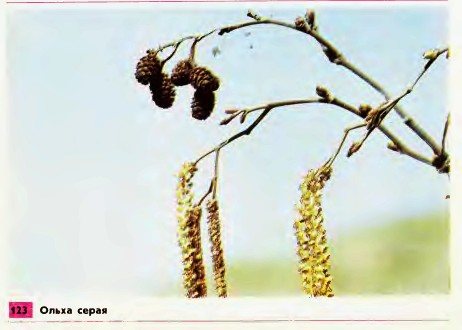
Pistillate alder flowers are collected in small grayish-green inflorescences. Next to them, the dry, blackened cones of last year's inflorescences are usually clearly visible.
Almost simultaneously with the alder, the hazel tree, which you met in the fall, blooms.
The staminate flowers of hazel develop in inflorescences - complex catkins, and the reddish stigmas of pistillate flowers protrude from generative (flower) buds.
Early flowering of alder, hazel and other wind-pollinated plants is a good adaptation to life in the forest.
Bare leafless branches do not impede pollination. Pollen picked up by the wind is freely transferred from one plant to another.
The flowering of coltsfoot is also a sign of the coming spring. This perennial herbaceous plant grows in open, sunlit places, on railway embankments, river banks, steep slopes and cliffs.
As soon as the snow melts, its scaly stems appear - flower stalks with bright yellow inflorescences, similar to the inflorescences of dandelions 124 . Large leaves of coltsfoot grow after its fluffy fruits ripen and disperse.
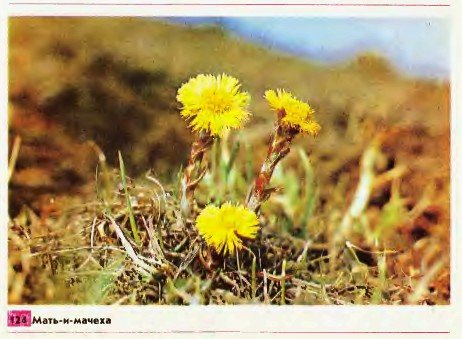
Coltsfoot received its unusual name for the uniqueness of its leaves. Their underside is covered with white, soft, felt-like hairs, and the upper side of the leaves is smooth and cold.
Coltsfoot blooms in early spring, before the leaves bloom, perhaps because its thick, long rhizomes contain reserves of nutrients deposited in the summer of last year.
Feeding on these reserves, flower shoots and fruits are formed.
The third sign of spring is the flowering of perennial herbaceous plants in the deciduous forest. In the middle zone they bloom almost simultaneously with coltsfoot. The first to bloom in the forest are the noble liverwort with azure flowers and the lungwort, then the oak anemone and buttercup 125 , corydalis 119 , spring primrose 126 , spring primrose 127 .
Autumn natural phenomena
With the arrival of autumn, it becomes cooler outside, the leaves gradually turn yellow and fall off, migratory birds head off to warmer climes, and insects and amphibians hide from view.
Leaf fall
All plants and trees have their own year-round life cycle. Before winter, trees always shed their leaves, and first they turn yellow.
Why does a tree need to get rid of its leaves? So that the snow that falls does not break the branches. Before the leaves begin to fall, the leaves on the trees dry out, turn yellow or red, and then the wind begins to blow them down. This phenomenon is called leaf fall.
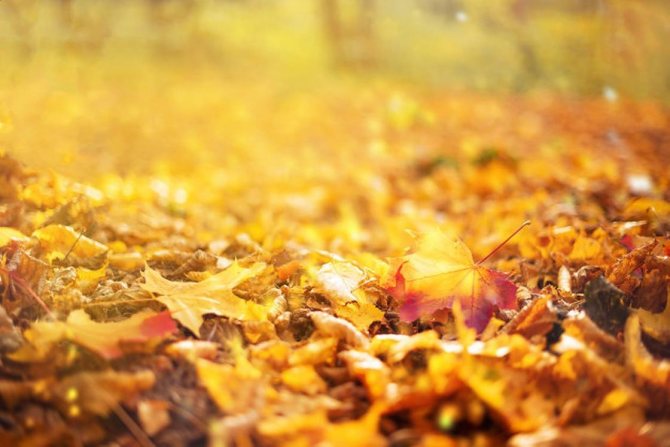
Autumn: Freepick
Fogs
In autumn, during the day the earth and water still heat up, but in the evening it gets colder and fogs appear. If the air humidity is high, for example after rains, which often occur in the fall, the air forms tiny droplets of water as it cools. They float above the ground, and people perceive them as fog.
Dew
This name was given by people to the droplets of water that fall on the grass and leaves in the morning. At night, the air cools down, and the water vapor that was in it settles in the form of droplets on the surface of the earth, grass and tree leaves. This is how dew is formed. If it is very cold at night, up to frost, then in the fall you can see frost - small crystals of water on tree branches and grass.
Showers and winds
In autumn there are often heavy torrential rains with gusts of wind. At this time of year there is a lot of water vapor in the air. It supercools and forms clouds containing small ice crystals.
At low air temperatures (below zero degrees) they grow and become heavier. At the bottom of the cloud, the crystals thaw and fall to the surface of the earth like raindrops.
May in the folk calendar
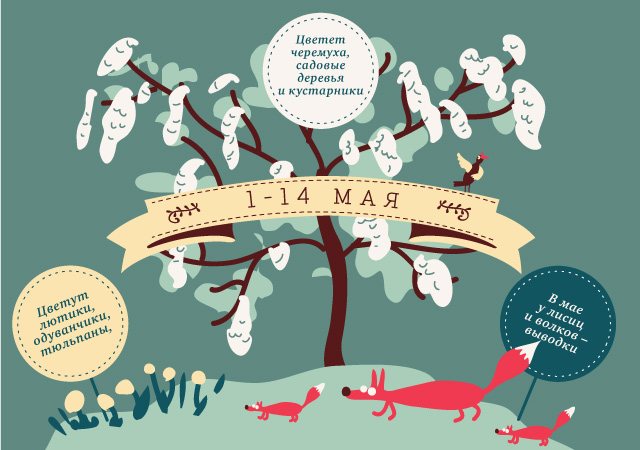
May 2. Nightingale day.
If the nightingale gathers to sing these days, spring will bloom together. The nightingale sang thoroughly - spring has begun to wane, and summer has begun to increase.
Article on the topic
Spring mood: March, April and May in painting and literature
May 7 - Savva and Yevsey Day
This oats, when your bare feet on the arable land do not feel cold.
A frog with a voice is oats.
May 8 - Mark the Keymaster Day
Mark is the keeper of the keys to the rain.
If the rain that began on this day continues until May 11, then the next three years will be very fruitful.
A green rainbow means good harvest rains, a high rainbow means good weather for a month, a low rainbow means bad weather.
May 10 - Day of Semyon the Early Tiller
Don't be lazy with the plow, you'll end up with a pie.
There are flaws in the arable land - there are holes in the pocket.
You cannot sing on this day - there will be a big loss, a crop failure, and all things will go badly this year.
May 11 – Mokey Wet
Wet on Mokea - expect an even wetter summer. If the sunrise is purple and it rains during the day, it means a wet, stormy summer.
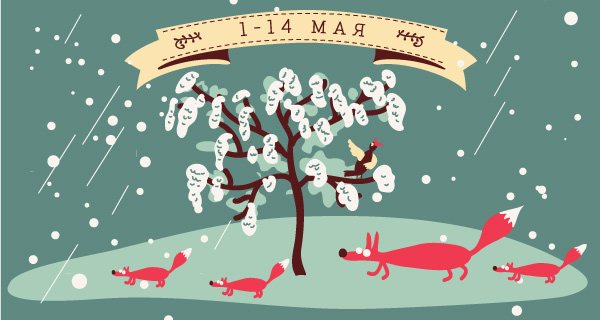
Photo: AiF/Yulia Osintseva
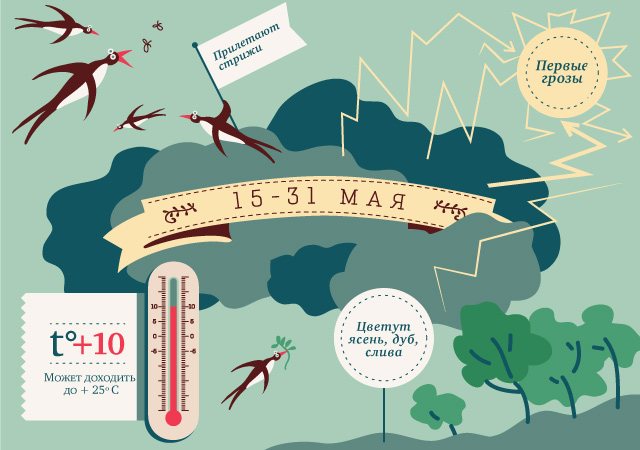
Photo: AiF/Yulia Osintseva
May 15 – Pakhom Bokogrey
Pakhom came and smelled warmth. It’s warm in Pahoma - warm all summer.
May 30 – Isaac the Serpentine
“Every reptile creeps out of its holes” on Isaac the Serpentine.
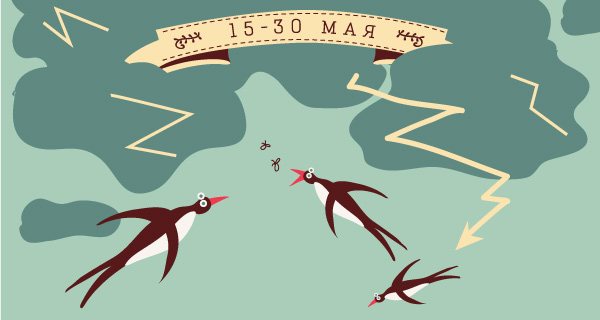
Photo: AiF/Yulia Osintseva
"Spring comes gradually." 10 poems about March

AiF

AiF

AiF

AiF
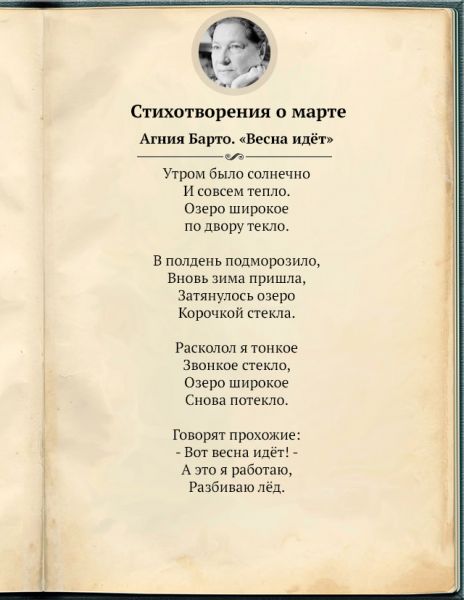
AiF

AiF

AiF
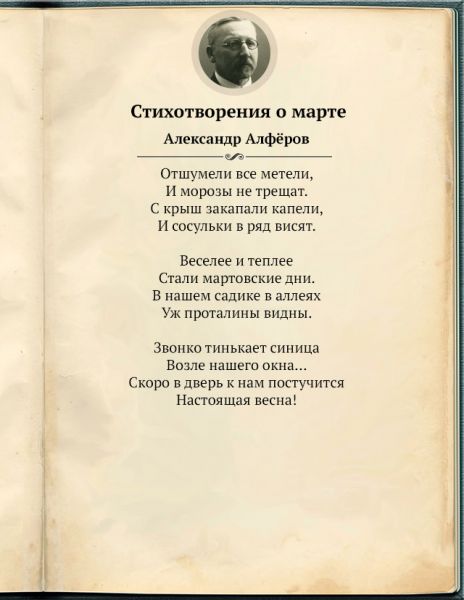
AiF

AiF
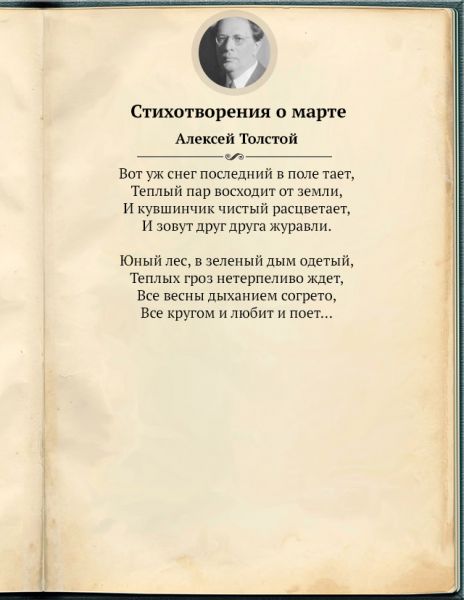
AiF
Characteristic signs of the onset of natural spring phenomena
The season of spring in the world around us is a mysterious and exciting event, since it occurs with such characteristic signs of rapidly changing natural phenomena as:
- Abundant melting of snow - when spring daylight hours noticeably lengthen, and the bright sun, rising high above the horizon, tries to shine longer, giving off more and more of the day's tangible heat. Under the influence of these intense processes, the deep, frozen snow that has accumulated over the winter begins to actively melt.
- Formation of icicles - the slow melting of snow forms spring drops, which on a warm day flow down drop by drop from numerous roofs of houses. In the evening, when the sun goes below the horizon, the air temperature cools sharply and the flowing drops instantly freeze.
- The appearance of thawed patches - under the influence of the heat of the daytime rays of the bright sun, dark areas of wet earth melted from snow appear in the open spaces of the hills, standing out sharply against the snow-white background of the winter landscape.
- Ice drift on the river - under the influence of the scorching spring sun, warm wind and continuous water flow, the ice fields become thinner and gradually burst, setting in motion huge masses of slowly melting ice floes.
- Uncontrollable flood is a prolonged influx of numerous streams of water into deep rivers with flooding of nearby floodplains. Due to the abundant melting of snow, the water regime quickly changes and the water level instantly rises, accompanied by the river overflowing its banks.
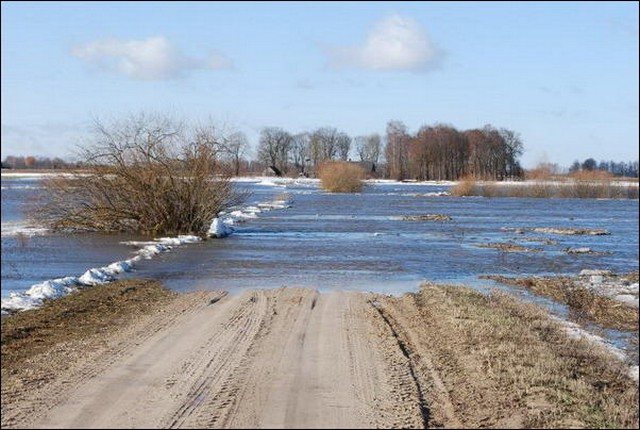
All these five signs of the onset of spring in inanimate nature are the main seasonal phenomena. In living nature, there are spring phenomena that are unique to it -
- early flowering of plants and the movement of juices in them from the roots to the top,
- swelling of buds, blossoming of leaves and appearance of flowers,
- the arrival of migratory birds and the polyphonic singing of birds,
- awakening of animals from hibernation and shedding of fur,
- the birth of animals and the birth of young chicks,
- feeding offspring of birds and raising the younger generation of animals,
which, of course, are associated with weather and annual seasonal warming of the climate, which promises heavy rainfall, subsequently changing the living conditions of numerous flora and fauna.
At this spring time, the following appear more and more often:
- morning fogs and light drizzles,
- dangerous hail precipitation and May thunderstorms,
- a squally wind sharply changing its strength and direction and the arrival of persistent heat.
These are the many signs of the onset of real spring.
Spring in pictures
To consolidate the knowledge the child has acquired, it is worth using illustrations on the topic “What spring it is!”
Available materials can include:
- thematic drawings;
- cut pictures;
- cards with images on the topic.
Illustrations may show:
- spring flowers;
- migratory birds;
- insects;
- Stories from the life of animals in the spring.
You can invite your child to draw spring as he imagines it, and then discuss the details of the drawing with him. It would be appropriate to learn several short poems on the topic with your child, and then select suitable images for them. You can make illustrations in the form of appliqués yourself using cut-out pictures. It’s good to prepare riddles about spring in advance along with the answers shown on small cards.
Children's cognitive abilities are maximized when using visual materials, especially if a serious lesson is taught in a light playful way.
Summer natural phenomena
In summer everything around turns green and blooms. Rivers and other bodies of water warm up so that you can swim in them. The sun is heating up with all its might, there are very hot days. During the summer, the days are the longest and the nights are very short. At this time, many fruits and vegetables ripen and are harvested at the end of August. We recognize summer by a number of signs.
Heat
In the summer, during the day, the sun's rays fall vertically onto the Earth and intensely heat its surface. At night, this heat is transferred back into the atmosphere. That is why in summer it is so hot at any time of the day.
Showers with thunderstorms
In summer the rains are usually warm, sudden and short-lived. Summer rains are often accompanied by thunderstorms. It also happens that during rain the sun continues to shine. Such precipitation is called mushroom rain.
The fact is that rain in summer can come from a very small cloud, which does not happen at other times. Light rain is called drizzle.
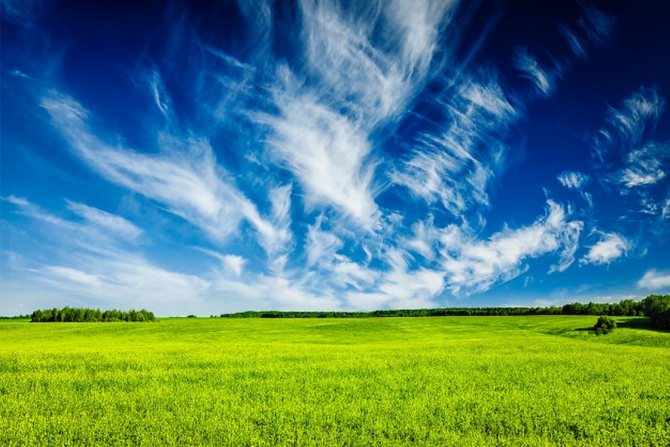
Summer: Freepick
Rainbow
After heavy rains and downpours with thunderstorms in the summer, increased humidity is observed in the atmosphere and such a phenomenon as a rainbow is observed. The observer sees this optical miracle as a multi-colored arc.
When the sun's rays refract water droplets, optical distortion occurs. From white, all other colors are formed and become visible and form a bright colorful arc in the sky.
Winter natural phenomena
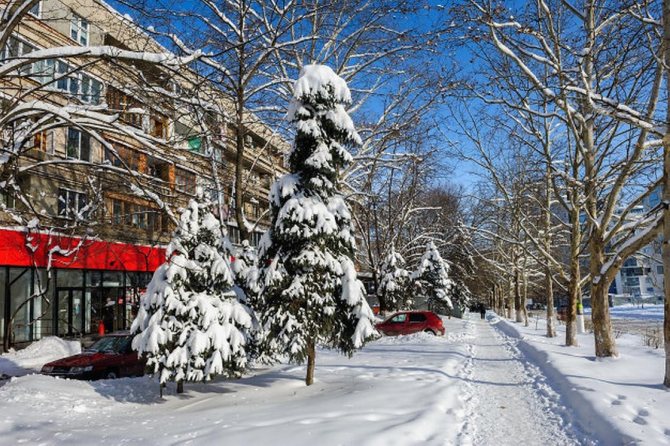
In winter, it gets really cold outside, frost starts, everyone is waiting for the snow to fall. Rivers and lakes are frozen. In winter, the nights are very long and the days are very short. It gets dark early, and the sunlight does not provide warmth. At this time of year, a number of phenomena occur in nature.
frosts
The temperature in winter drops below zero, and therefore the water in the environment freezes. After a sharp cold snap, icicles appear on the roofs of houses, and roads are covered with a layer of ice, which is called glaze.
In the event of a temperature difference, the windows on the outside are decorated with frosty patterns. Water droplets from the air freeze so beautifully.
Freeze-up
In winter, a layer of ice forms on the surface of reservoirs, that is, freeze-up. Ice usually persists until spring, when warming begins, ice drift and the next natural cycle begin.
Snowfalls
The cooled water in the clouds turns into snow and falls to the ground in this form, covering it with a white blanket. Due to the low temperature, the snow does not melt and forms high snowdrifts.
Blizzards
This is the name given to snowfalls with strong winds. The wind is such that it knocks you off your feet. It gets very cold and dark. A person who finds himself outside in a snowstorm runs the risk of hypothermia.
Nature is very diverse and always beautiful. Seasons change each other - spring, summer, autumn and winter. Each of them brings its own wonders of natural phenomena, which you can and should enjoy, because, as you know, nature does not have bad weather.
Original article: https://www.nur.kz/family/school/1909299-yavleniya-prirody-po-vremenam-goda/
May: summer is just around the corner
Description of the nature of late spring (III - IV week)
Brief frosts at night may still occur, but, as a rule, by the 3rd-4th week of May the weather becomes dry and hot. The first rumbles of thunder and thunderstorms are noted. The sun is gaining momentum and, from morning to sunset, saturates the earth and the entire flora of nature with warm, often hot rays. By the end of May, along with the air, the earth quickly warms up and hot summer weather may set in.
Nature is in a hurry, there is very little time left until summer, we need to do everything in time. You won’t recognize the recent forest, you won’t recognize the preened birches, the aspens primly dressed in green, the fashionably decorated rowan trees. So far, only the oak tree is in no hurry to put on a new suit, but its time is not far when the branches will acquire leaves. And now the poplars are decorated with fragrant bows, they will soon bloom. The apple tree has unfolded in a festival of petals, the flowers are shining with young colors, and the dandelions are turning yellow in the meadows.
Foreyear of May in the folk calendar
“Spring rain raises bread. There's no need for rain in May"

Before our eyes, the grasses are blowing up, nettles are growing, and by Mavra, which is May 16th, it’s time to eat cabbage soup. Cabbage is planted on May 18th, this is Arina the Rassadnitsa day. Now it’s time to fill the small furrows of the spicy soil with cucumber seeds, May 19 - Job the Borage.
First thunderstorm. The sun suddenly darkened and the sky became overcast with heavy clouds. The dim sky is illuminated by flashes of lightning, and the first strikes of thunder rush through the forest frozen in fear. Nature needs rain showers; they wash the soil and prepare the soil for sowing. On May 22, they begin to sow the land in Nikolshchina. And by May 26, Lukerya-Komarnica brings the first mosquitoes. Well, finally the weather is good, warm and, at times, hot. Nature is ready for the new season. Hello summer!
Flowering shrubs in spring
All of them are photophilous and bloom under the forest canopy, when there is no foliage on the trees and shrubs.
In the life of some early flowering herbaceous plants of the forest, their growth under snow is very interesting. Plants such as scilla or snowdrop grow under the snow in winter.
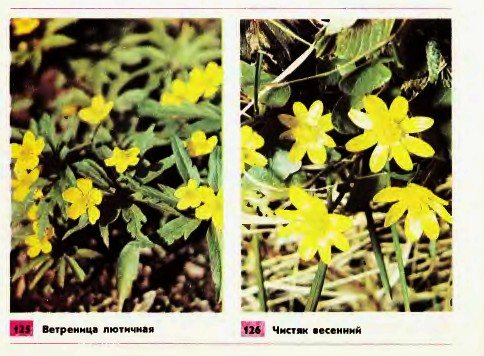
In the spring, many of them emerge from under the snow with green leaves and buds that formed last fall.
Οʜᴎ often bloom before the snow melts 128 . That's why these plants are called snowdrops.
Plants that bloom in early spring always attract attention because they are beautiful and because they are the first plants to bloom after a long winter. Unfortunately, they are often collected in large bouquets. They often destroy entire plants by uprooting them. Plants whose flowering shoots are torn off do not produce fruits or seeds.
This makes it difficult for them to reproduce. Many of the plants have become very rare, for example, liverwort and sleep grass. We must not allow them to disappear completely. We are obliged to take care of the preservation of plants, not to tear them in order to throw them away every other day, not to damage wild plants and to actively protect nature.
Nature protection and rational use of the country's natural resources are legalized by the Constitution of Russia, i.e. are mandatory for all citizens of our country.
Trees and shrubs that are pollinated by insects bloom later, after the leaves have bloomed. If you observe the progress of spring from year to year, you will be able to establish the sequence of spring development of plants.
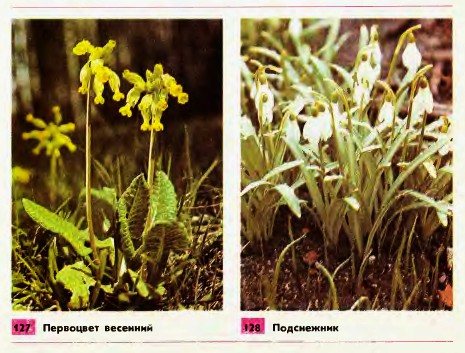
In the central European part of the USSR, usually 8 days after the coltsfoot flowering, lungwort begins to bloom, and 21 days later - dandelion and willow willow.
The pear blooms on the 29th day, the yellow acacia on the 30th, and the linden on the 75th day after the coltsfoot begins to flower.
Every year, spring phenomena occur in strict order. For example, lungwort always blooms later than coltsfoot, but before dandelion.
Observations of spring phenomena in plant life help to establish the best timing for agricultural work and prepare for it in a timely manner.
For example, it is known: in the regions of the middle zone, the best harvest of cucumbers is obtained by sowing their seeds during the flowering of lilac and yellow acacia, and the best harvest of turnips and beets is obtained by sowing them during the flowering of aspen.
Knowing how many days after the flowering of the coltsfoot lilac blooms, it is easy to set the date for sowing cucumbers and prepare for it.


